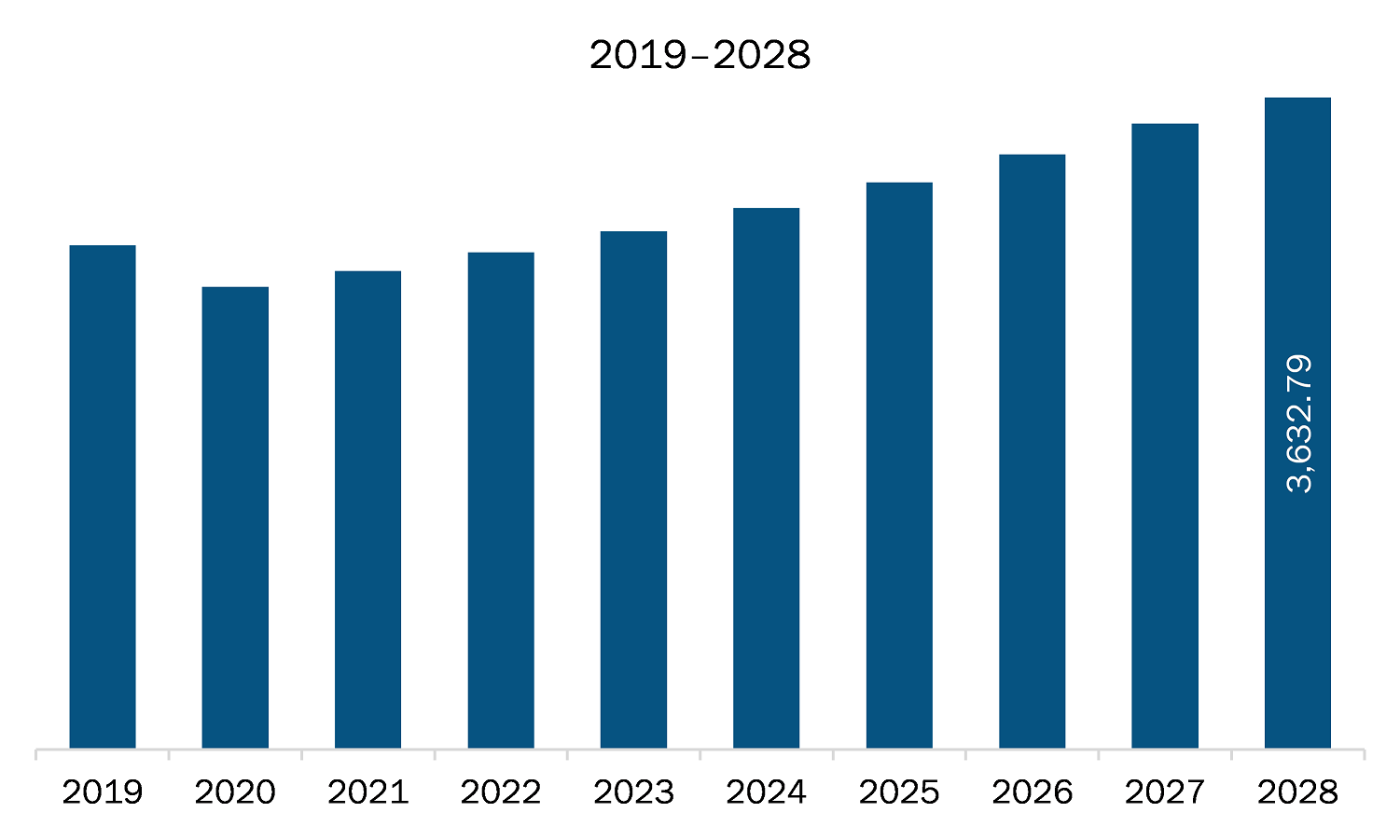The sparkling wine market in SAM is expected to grow from US$ 2,664.61 million in 2021 to US$ 3,632.79 million by 2028; it is estimated to grow at a CAGR of 4.5% from 2021 to 2028.
South Africa and UAE are economies in MEA. Rapid socioeconomic changes and fast-paced urbanization are bolstering the demand for sparkling wine. With continuous rise in living standards and buying power, customers desire to purchase high-quality, luxurious items. Moreover, their food habits and meal preferences changes with these changes in lifestyle. Thus, the demand for sparkling wine in parties, marriages, and social gatherings is on rise. With the growing preference for drinks with low or no alcohol content, the popularity of this wine is increasing among millennials, teenagers, and working populations, and in bachelors and people living in hostels. Furthermore, increasing social media and the Internet has significant impact on all generations, as well as an increase in social parties, are increasing consumption of sparkling wine.
The country with the most confirmed COVID-19 cases in South America was Brazil, followed by Argentina, Peru, Chile, and Ecuador. Governments across the region have implemented several preventive measures to protect their residents and limit the spread of the novel coronavirus. Limitations on operations of various industries across the region have adversely affected the demand for sparkling wine, which is further expected to restrain the growth of sparkling wines market in South America.
With the new features and technologies, vendors can attract new customers and expand their footprints in emerging markets. This factor is likely to drive the sparkling wine market. The SAM sparkling wine market is expected to grow at a good CAGR during the forecast period.

- This FREE sample will include data analysis, ranging from market trends to estimates and forecasts.
SAM Sparkling Wine Market Segmentation
SAM Sparkling Wine Market – By Type
- White
- Red
- Rose
SAM Sparkling Wine Market – By Packaging Type
- Bottles
- Cans
SAM Sparkling Wine Market – By Distribution Channel
- Supermarkets and Hypermarkets
- Specialty Stores
- Online Retail
- Others
SAM Sparkling Wine Market- By Country
- Brazil
- Argentina
- Rest of South America
SAM Sparkling Wine Market-Companies Mentioned
- Bacardi and Company Limited
- Chandon
- Constellation Brands, Inc.
- Henkell Freixenet
- Treasury Wine Estates Ltd
South America Sparkling Wine Report Scope
| Report Attribute | Details |
|---|---|
| Market size in 2021 | US$ 2,664.61 Million |
| Market Size by 2028 | US$ 3,632.79 Million |
| CAGR (2021 - 2028) | 4.5% |
| Historical Data | 2019-2020 |
| Forecast period | 2022-2028 |
| Segments Covered |
By Type
|
| Regions and Countries Covered |
South and Central America
|
| Market leaders and key company profiles |
|
- Historical Analysis (2 Years), Base Year, Forecast (7 Years) with CAGR
- PEST and SWOT Analysis
- Market Size Value / Volume - Regional, Country
- Industry and Competitive Landscape
- Excel Dataset
Recent Reports
Testimonials
Reason to Buy
- Informed Decision-Making
- Understanding Market Dynamics
- Competitive Analysis
- Identifying Emerging Markets
- Customer Insights
- Market Forecasts
- Risk Mitigation
- Boosting Operational Efficiency
- Strategic Planning
- Investment Justification
- Tracking Industry Innovations
- Aligning with Regulatory Trends





















 Get Free Sample For
Get Free Sample For